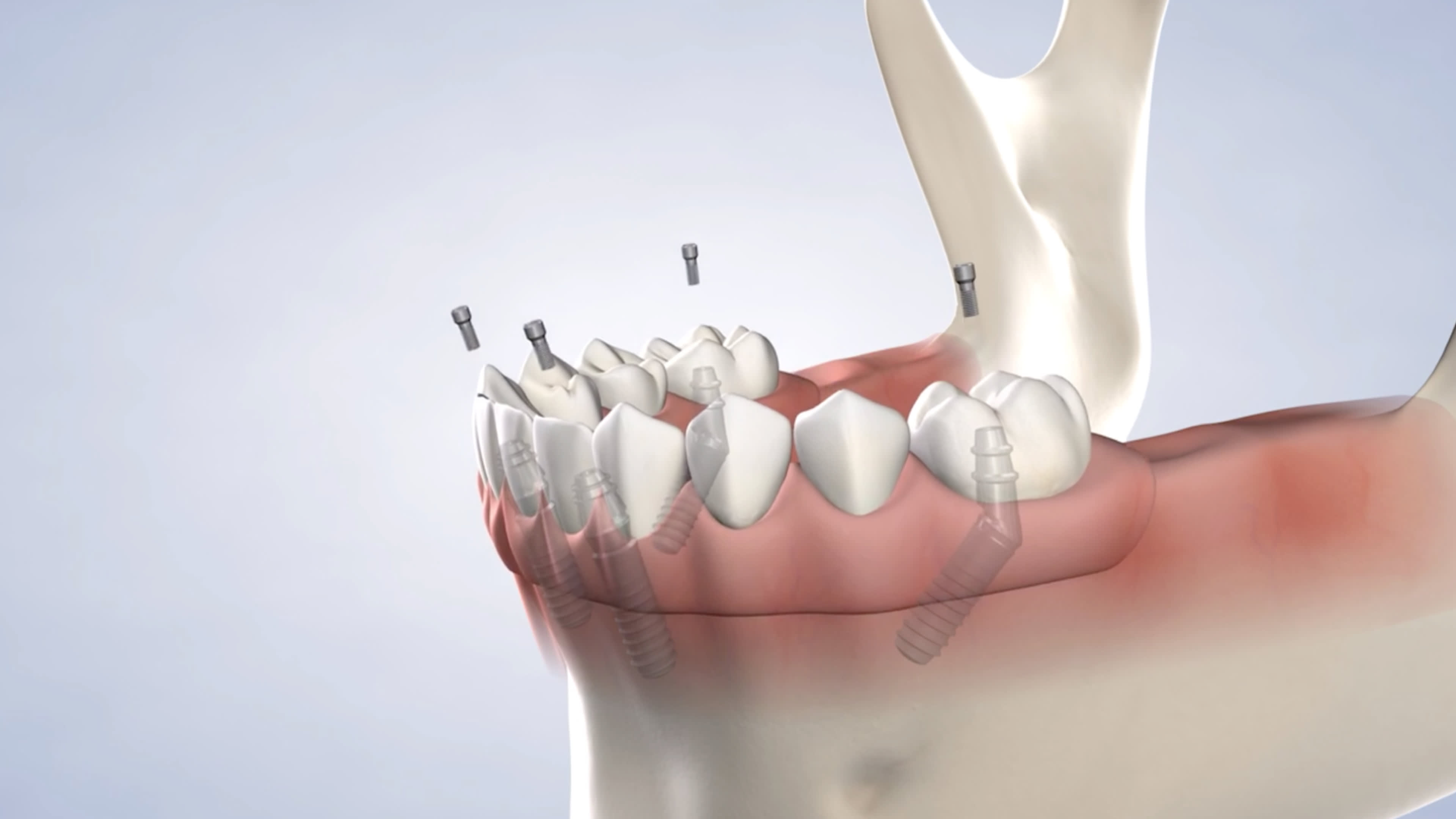Post-Operative Instructions: Full-Arch Restoration
BACKAfter your full-arch replacement, it is important to properly care for your mouth. Following these post-operative instructions will promote healing and deliver optimal results.
Bleeding
Intermittent bleeding or oozing is normal. Bleeding should never be severe. If it is, try repositioning fresh packs to allow you to place firm pressure over the area. Always hold pressure for a minimum of 30 minutes at a time. If bleeding persists, you may substitute a tea bag for the gauze. Wet the tea bag with hot water, squeeze it damp-dry, and wrap it in a moist gauze. Apply pressure over the surgical area for 30 minutes. If bleeding remains uncontrolled, please call our office. Gauze will look light pink, spotted, or rust-colored when bleeding is controlled. When bleeding is controlled, gauze may be left out.
Swelling
Often, there is some swelling associated with oral surgery. You can minimize this by using a cold pack or ice bag wrapped in a towel and applied firmly to the face or cheek adjacent to the surgical area. This should be applied 20 minutes on and 20 minutes off during the first 48 hours after surgery.
Nausea
In nearly all cases, if you experience nausea, it is most likely from your prescribed narcotic pain medication. Allow the nausea to subside and take a smaller dose at your next interval. Often, breaking the tablet in half is sufficient to control pain without nausea. Eating something prior to taking the narcotic can prevent nausea. If nausea persists, please call our office.
Diet
Take out gauze packs while eating. Eat only a soft diet for 4 months. This time will be specified by your doctor. A soft diet is described as “nothing harder than scrambled eggs.” Avoid extremely hot foods. It is important not to skip meals! If you take nourishment regularly, you will feel better, gain strength, have less discomfort and heal faster. Do not use a straw, spit, or suck on anything. If you are diabetic, maintain your normal eating habits as much as possible. Follow instructions from us or your physician regarding your insulin schedule.
Additional Instructions Following Surgery:
Use Caution
Do not disturb the surgical area today. Do not rinse vigorously or probe the area with any objects or your fingers. DO NOT SMOKE for at least a week, since it is detrimental to healing.
Brushing
Begin your normal hygiene routine the day after surgery. Soreness and swelling may not permit vigorous brushing of all areas, but please make every effort to clean your teeth within the bounds of comfort.
DO NOT USE a Sonicare® around your implants until your surgeon gives you authorization. Usually this will be 4 months.
Be aware of any other device or mechanism that can introduce vibrations! These devices can cause implant integration issues!
USE a Waterpik® or electric flossing device starting 3–4 weeks after surgery.
Sharp Edges
If you feel sharp edges in the surgical areas with your tongue, it is probably the bony walls that originally supported the teeth. Occasionally, small slivers of bone may work themselves out during the first week or two after surgery. They are not pieces of tooth, but if they are bothersome, we will remove them. Please call the office if you are concerned.
Mouth Rinses
Keeping your mouth clean after surgery is essential. If you have been given a prescription for Peridex™ oral rinse: Rinse for 30 seconds with 15 mL of Peridex 2 times a day. Use Peridex only during the first 2 weeks of healing. NOTE: Peridex may cause alteration of taste perception during use and may increase staining of teeth and other oral surfaces. To avoid this, use Peridex only during the first 2 weeks of the healing process. There is no need for prolonged use. Do not eat or drink for 30 minutes following the rinsing.
Special Instructions
Starting 4 weeks after surgery, use “Super Floss” to gently floss the areas, and LIGHTLY “polish” with an ultra soft toothbrush and warm water.
We Are Here To Help
Please contact our office if you have any questions or issues with these instructions.
